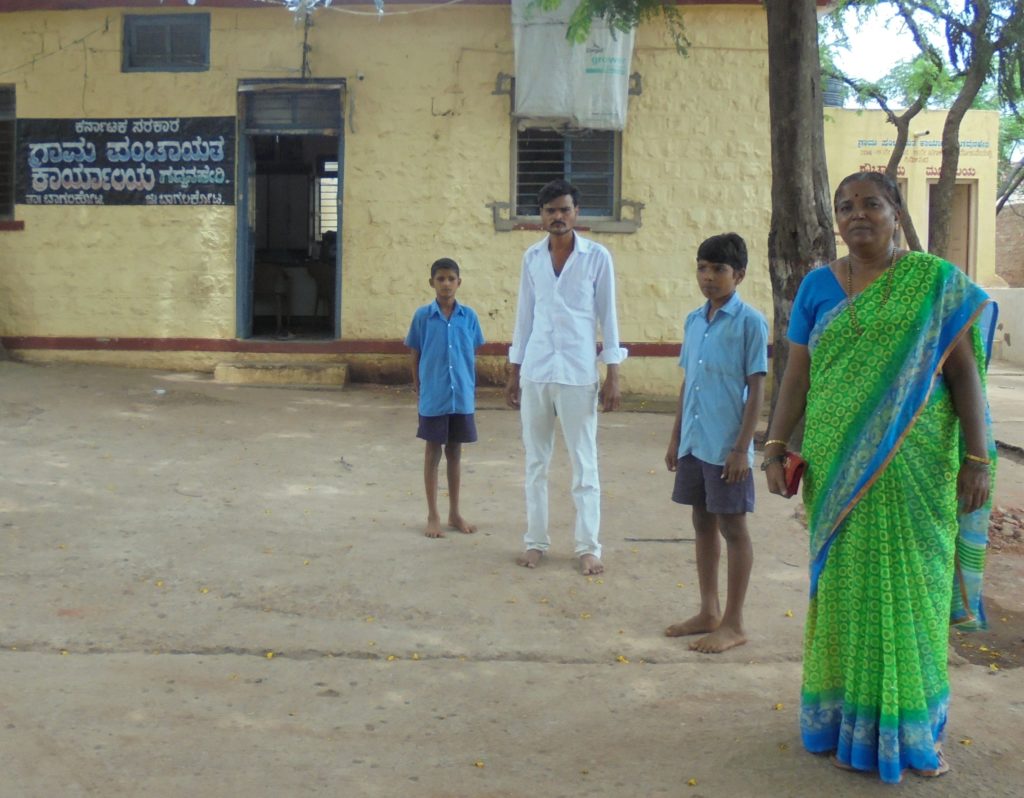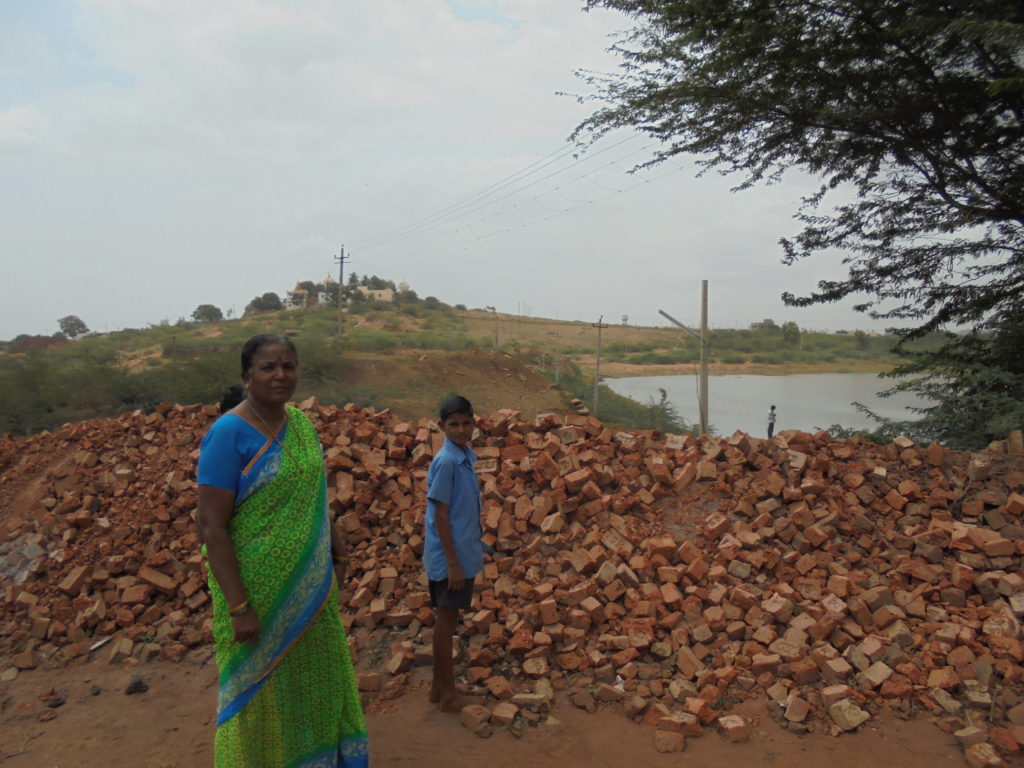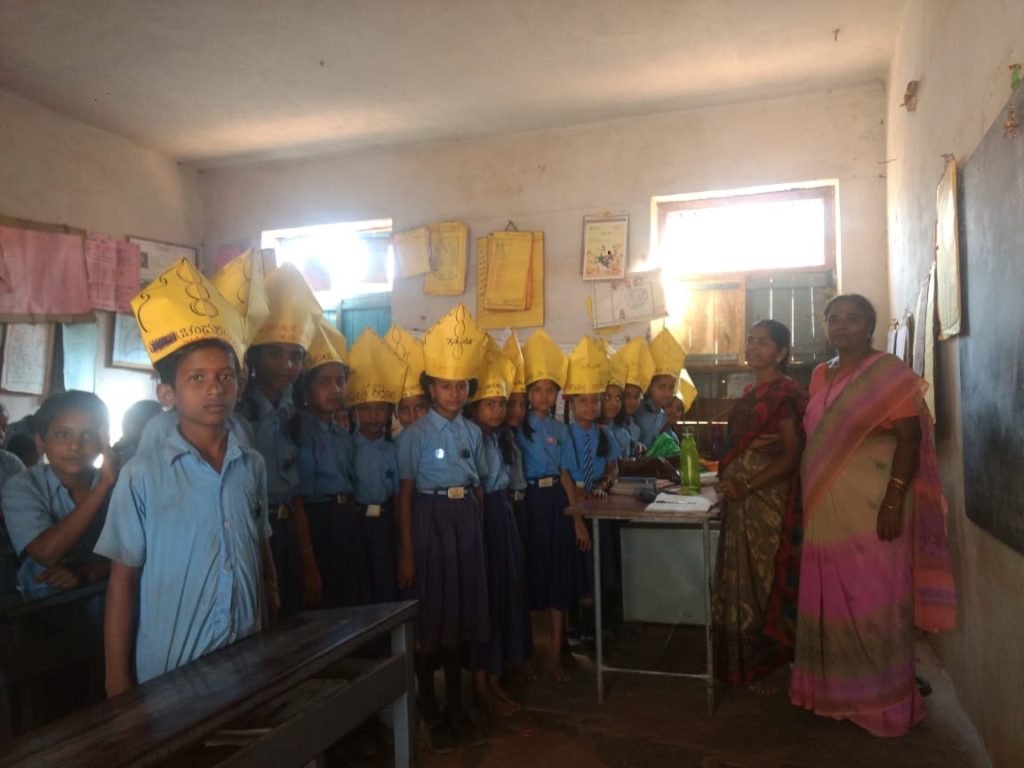Practice Insights > Teachers for Inclusive Society
Bringing Child Labourers to School
Teacher: Sukanya Gangal
School: Government Higher Primary School, Gaddanakeri, Bagalkot district, Karnataka
By: Umashankar Periodi and Sarala Kairanna
Overview
The Gaddankeri Higher Primary School (HPS) is situated in the city area of Gaddankeri. Around Gaddankeri, there were a number of brick kilns. According to sources, between 2008 to 2014, when there were fewer brick kilns (bhattis, in local language), some children used to work in these. It was at that time that Sukanya Gangal started meeting the kiln owners and parents of the children working there to motivate them to send the children to school. This had its impact and children began to attend school from November to February, every year. Since 2014, the number of these kilns have increased and about 25 to 30 children every year work in these. Unquestionably, these children are child labourers. Most of the labourers here migrate from Basavana Bagewadi or Indi taluk of Vijayapur.

In the year 2015, the news of children working in the brick kilns reached the offices of the labour department, and the officials visited the kilns and the schools. According to the Head Teacher (HT), Mrs Lokeshwari, the planning officer created awareness among all the teachers and the children regarding child labour. The same year, in the Children’s Gram Panchayath meeting, the issue was raised, and it was decided that the children who migrate should attend the nearby school. As per the decision, HPS Gaddankeri continued the Ruthumana Shale (seasonal school) and all the teachers started involving and visiting children in the brick kilns to bring them to school.
About Sukanya Gangal
Sukanya Gangal is a teacher who is concerned about these children working as child labourers. She has been teaching at the HPS Gaddankeri since 2006. She started working as a teacher in 1989 at the age of 24 in her hometown Herkal, Beelagi taluk where she worked for two years before being transferred to HPS Sunnad in Bagalkot. She worked there for eight years and was then transferred to KGS No. 8 school where again she taught for eight years before coming to HPS Gaddankeri. Her teaching experience is now close to three decades. According to the HT and her colleagues, she is a committed teacher of the school, who likes to teach these children.
The Teacher’s background
Sukanya comes from an agriculturist family and has a deep understanding of poverty and challenges. Her own teacher was her inspiration and motivated her to become a teacher. In recent years, Sukanya helped her with hospital bills and care before the teacher passed away. When she joined the profession, Sukanya, like most others, had only desired to become a good teacher. But when she started working and observed the difficulties of her students, who struggle to continue in school, her concern for the children, especially, girls who drop out due to financial and traditional reasons, grew intense. She began to support them to continue in school by counselling their parents and supporting them financially to pay fees, buy books etc. Sukanya has two children, who are both software engineers in Bangalore. Her husband works as a manager in the Karnataka Vikas Bank in Kaladagi, Bagalkot and supports Sukanya in her social work initiatives.
Engagement with the Teaching-Learning Centre
Sukanya has participated in the Teaching-Learning Centre (TLC) vision-building workshop and takes an active interest in all its activities. She used to teach social science earlier and for three years now, has participated in the social science workshops and the Voluntary Teacher’s Forum (VTF). Every Wednesday, she participates in the evening discussions at the TLC and has recorded more than a hundred hours there in the last year. She is very interested in learning and applies it in her classroom.
Working with brick-kiln children
Most of the children in Gaddankeri HPS are from the labour class and many of them work with their parents in the brick kilns and attend school but there are other children who migrate from other places but do not attend school. Therefore, in the initial years (probably, 2008), Sukanya used to visit the brick kilns to motivate parents and owners of kilns to send children to school. According to her, these children are doing hazardous work in kilns as sulphur is used in the making of bricks. These children work in the dust; mix mud with their naked hands; and, fall sick due to the nature of this work.

Her interest and work slowly motivated her colleagues, who also started visiting these children and their parents either at the brick kilns or their homes to convince them to send children to school. This helped a great deal in ensuring the regularity of children to school in age-appropriate classes. A card system (document) was prepared and used for attendance.
When the new HT, Mrs Lokeshwari took charge in the year 2015, she too took interest and started issuing certificates to children who attended school regularly. In the month of March, the children were sent back to their native places with the help of their parents to appear for their annual exams. Every year, Sukanya takes the initiative of this work and her colleagues support her. She brings books, pencils, pens for her students with her own money and provides uniforms to them by contacting old students or the education department.
Sukanya’s classroom
From this year, Sukanya has started teaching Mathematics because there are no teachers to teach maths. The DDPI too could not arrange for maths teachers and some power-play came into the picture to avoid which, Sukanya opted to teach maths to classes V to VII. She says that she finds it difficult to teach algebra and has to practice at home before teaching it to her students.
During the classroom observation, she was teaching the lesson on ‘Time’. She started the class with questions to gather the existing knowledge of children. Then, she introduced the hours of the day and connected it to the rotation of the earth through an activity and to a social science lesson. For the second activity, she made the children draw the picture of a clock with 24 hours and connected it to deductions to identify AM and PM.

The class had forty-two children and she involved the students in conversation throughout. The activities and the connection with other subjects helped the children understand the concept of time. When I questioned her about the reciting of maths tables at the beginning of the class, she said knowing tables by heart would help children in solving maths problems quickly.
Sukanya believes that every child has a right to education and each child should get education to lead an independent life. According to her, education shapes the lives of children and enables them to pursue better livelihood options. She refers to some of her old students, who are working as teachers, engineers, doctors or are self-employed.
Conclusion
Sukanya treats children well and she is concerned about their welfare. We also visited the brick kiln with her and she brought one child from there to the school. She provided a book and a pen to the child and made him sit in class IV.
Sukanya applies her learning in her social science classroom, but her attitude towards some traditional methods, like the of learning tables by heart, is yet to be changed.
AUTHOR
Umashankar Periodi leads Azim Premji Foundation’s work in Karnataka. He has been in the field of development for two decades working with tribal and marginalized sections. He has been with the Foundation since 2003 in different roles.
Sarala Kairanna has been working in the field of development for two decades. She was coordinating the Foundation’s work in Bagalkote district previously and is now a Resource Person in the Bagalkote team.

